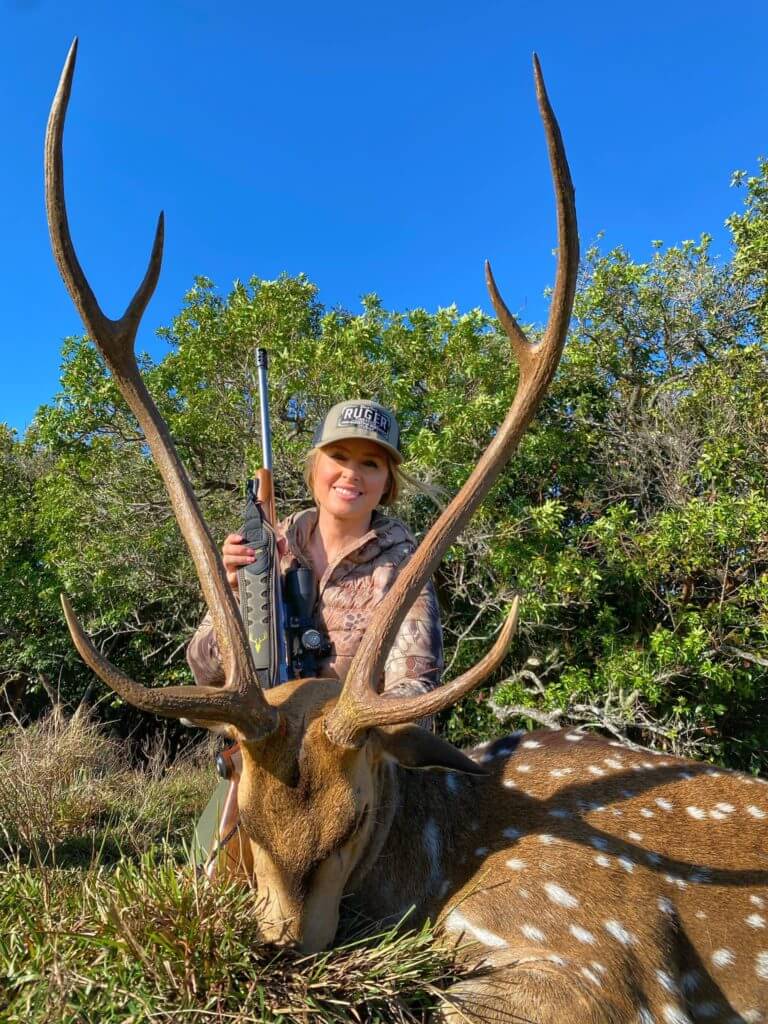
Bask in the sunshine, breathe in the sea and live in the wild air, paradise does exist, and it is here that deer season is always open. If you are looking at an exotic destination for vacation and want to spend a couple of days hunting, look no further than the Hawaiian Islands. The six main islands, Kauai, Oahu, Molokai, Lanai, Maui, and the Island of Hawaii each have their own distinct hunting adventures and activities.
Hunting opportunities range from Axis deer, Hawaiian Goats, Wild Boar, Black Hawaiian Sheep, Rio Grande Turkey, and a variety of upland game bird hunting. If you are looking to book a trip to the Hawaiian Islands for a hunt-cation, I have put together some of my top travel tips to make your big game hunting adventure one that you will remember for a lifetime.
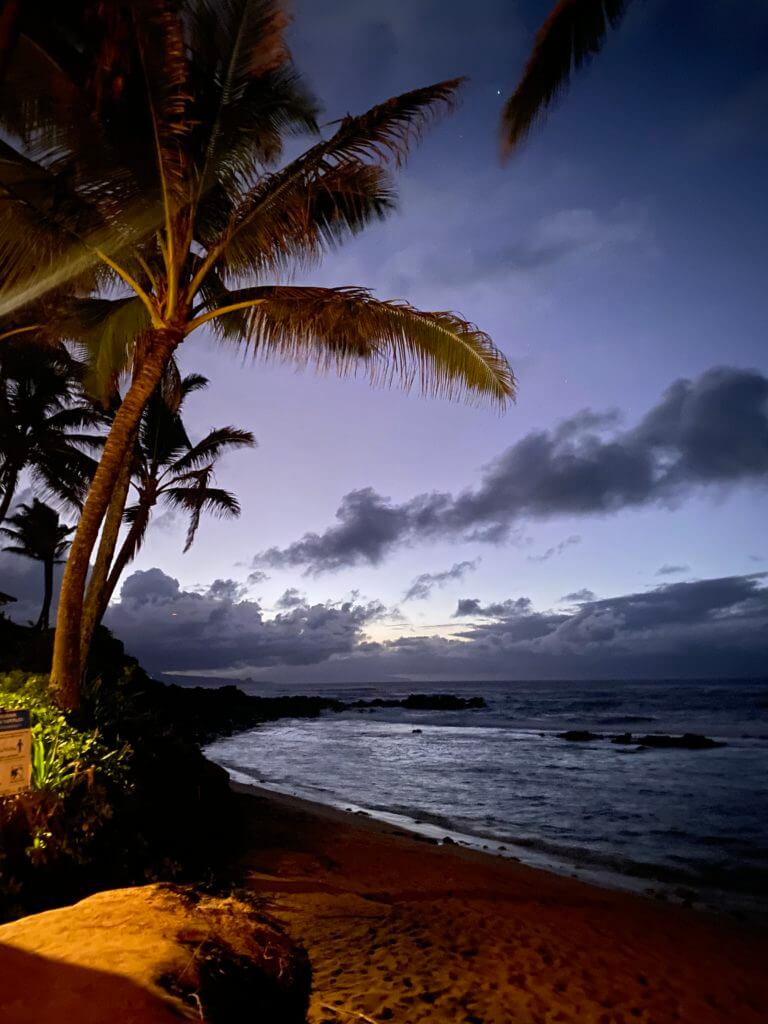
Avoid the Rush – Book During the Shoulder Season
Hawaii can be rather costly and crowed during the peak season. You can avoid the crowds and lower your travel expenses by planning your trip in what is deemed, the shoulder season, where less tourists are typically visiting the island and you can save on flights and accommodation.
February Through March
If you are interested in hunting Rio Grande Turkeys, the spring season runs March 1st – April 15th. Consider booking your hunt-cation in the month of March during the shoulder season and avoid the first two weeks of April. During this time, add on species could include Wild Boar, Black Hawaiian Sheep and Hawaiian Goats. Although Axis deer is available, you may struggle to find a buck that is hard horned and finished growing during this time.
Mid-April to Mid-June
Black Hawaiian Sheep, Hawaiian Goats, Wild Boar and Axis deer are available to hunt during this part of the shoulder travel season.
Keep in mind, the majority of the Axis deer rut mid-May through mid-July but hunting is considered good for Axis deer mid-March through October. We hunted April 10th – 20th and found that some Axis bucks were still in the velvet and growing, while others, had just shed velvet and were beginning to hit the pre-rut phase.
Booking your hunt-cation from May to mid-June should keep you in the shoulder travel season and many Axis bucks will be hard horned and in the peak of the rut.
September to mid-December
September and October are both months that are considered great Axis deer hunting. The bucks will be post rut and most should still be packing antlers. Upland bird hunting season starts in November and runs until January. You can add on Black Hawaiian Sheep, Hawaiian Goats, and Wild Boar to a hunt booked during this portion of the shoulder travel season.
Before Your Hunt
Hawaii is not a state that you touch down and run to the nearest sporting goods store to purchase a hunting license. All non-resident hunters purchasing a Hawaii hunting license for the first time are required to complete the “Non-Resident Exemption Request Form”. This is where hunters will submit a scanned copy of their valid Hunters Education Card as recognized by International Hunter Education, and a scanned copy of their valid driver’s license, state ID card, passport, birth certificate or school ID card.
Once the form is processed, an email notification will be sent out with a valid exemption number that is issued by the Hawaii Hunter Education Program. This exemption number is mandatory for non-residents prior to purchasing a hunting license. Once you receive the exemption number, you will be able to purchase a non-resident hunting license online for $105.00 which can be printed at home.
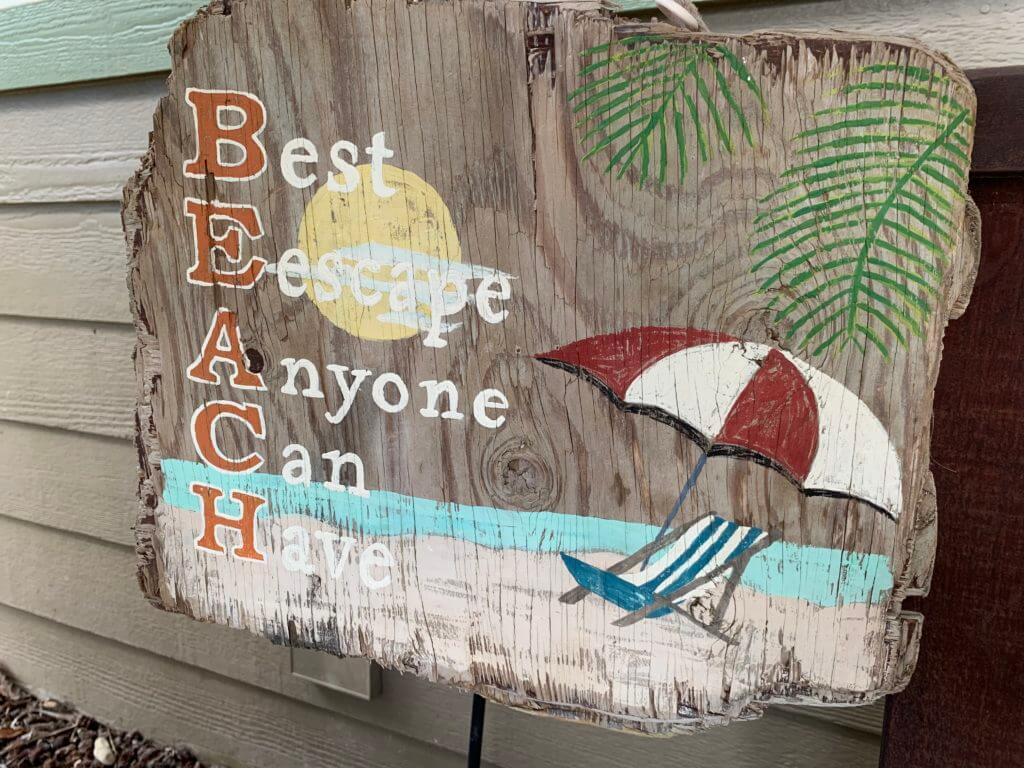
Where To Stay
Instead of booking at a hotel or resort, look into booking a vacation rental where you can save a lot of money and have the perfect home away from home. From condos to houses, you can shop the size of the vacation rental that you need based on how many people are in your party. Sharing a home with friends can save a lot of money and can be a lot more enjoyable with home cooked meals and family style BBQs.
One of the many benefits of a vacation rental is having access to on-site laundry which will make cleaning up after your hunting trip a lot more convenient. And a house or condo with a full refrigerator and freezer will help you store your frozen game meat until you are ready to go home.
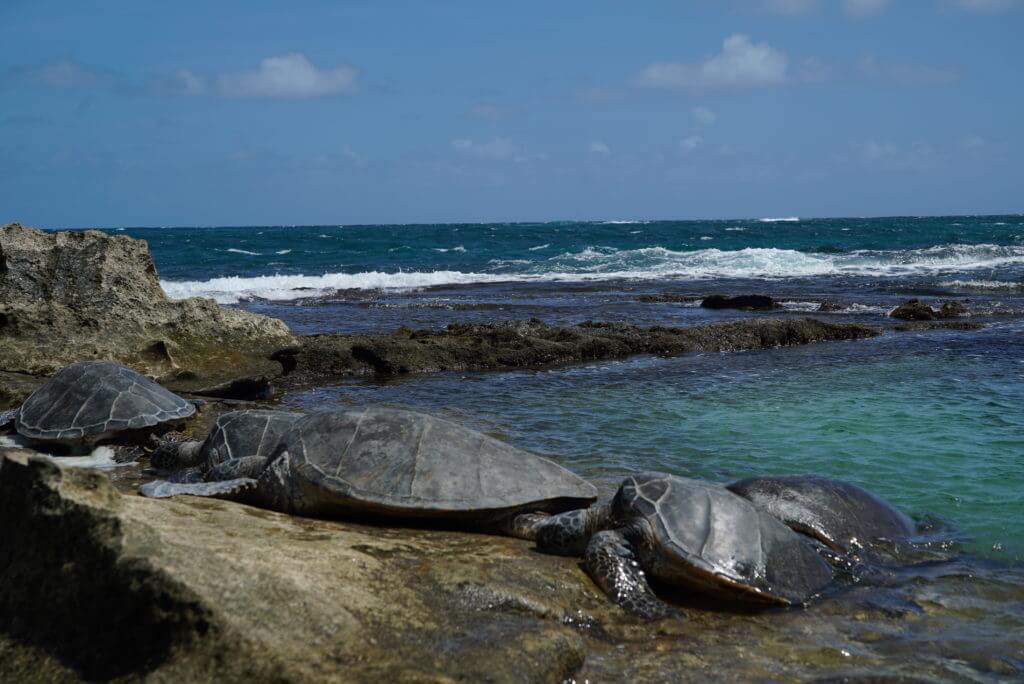
Check the vacation rental description and look for amenities like free parking, pools, hot tubs, and beach access. Many vacation rentals on the islands come fully stocked with beach towels, chairs, beach toys for children, boogie boards, snorkels, or bikes.
On The Ground
Regardless of the island that you are visiting, it is highly recommended that you rent your own vehicle for your stay in Hawaii. Even though rideshare options are extremely convenient and often times less expensive, during our stay, drivers were rarely available and cancelled numerous trips without ever sending a driver.
Additionally, most outfitters do not offer transportation from your resort or vacation rental to the hunting area.
The big bonus to renting a car is that driving is one of the best ways to see all of the attractions found on each island such as, for example, the Road to Hana on the island of Maui.
Firearm Registration
All firearms imported into Hawaii from out of state must be registered with the Hawaii Police Department within 72 hours of arrival. You will be charged a one-time fee of $43.25, and the payment must be in the form of Money Order or Cashier’s Check. I recommend contacting the local police department on the island that you are hunting to verify the payee of your cashier’s check as the named payee may vary from island to island.
Typically, there is no appointment necessary at the police department however, you need to have in your possession a valid form of ID and firearm. During all transportation, your firearm must be unloaded, bolt removed, the magazine out of the firearm and the firearm secured in a case.
Learn more about the registration process here.
Shopping Hack
Depending on the island, there may be options for big box shopping, and if so, you will want to make one of these stores one of your first stops in order to stock up on items that you are going to need for hunt and stay, for example, quick pre-hunt breakfast items, snacks, ingredients to make lunches, and dinner items.
On our trip to Maui, we only dined out three times during our entire trip. The rest of the time, we cooked at our vacation rental, saving a ton of money.
Don’t forget to stock up on water, adult drinks, sunscreen, and souvenirs!
If you don’t intend to have your trophy mounted by a taxidermist in Hawaii and shipped at a later date, you will want to purchase the following items to transport your trophy and meat home with you on your domestic flight:
- Medium cooler (Large enough to transport 50# of frozen game meat)
- Soft sided cooler (Large enough to store your frozen cape for transport)
- Large duffel bag (Large enough to transport antlers. Trophy Axis deer average 30” and can be up to 38” long)
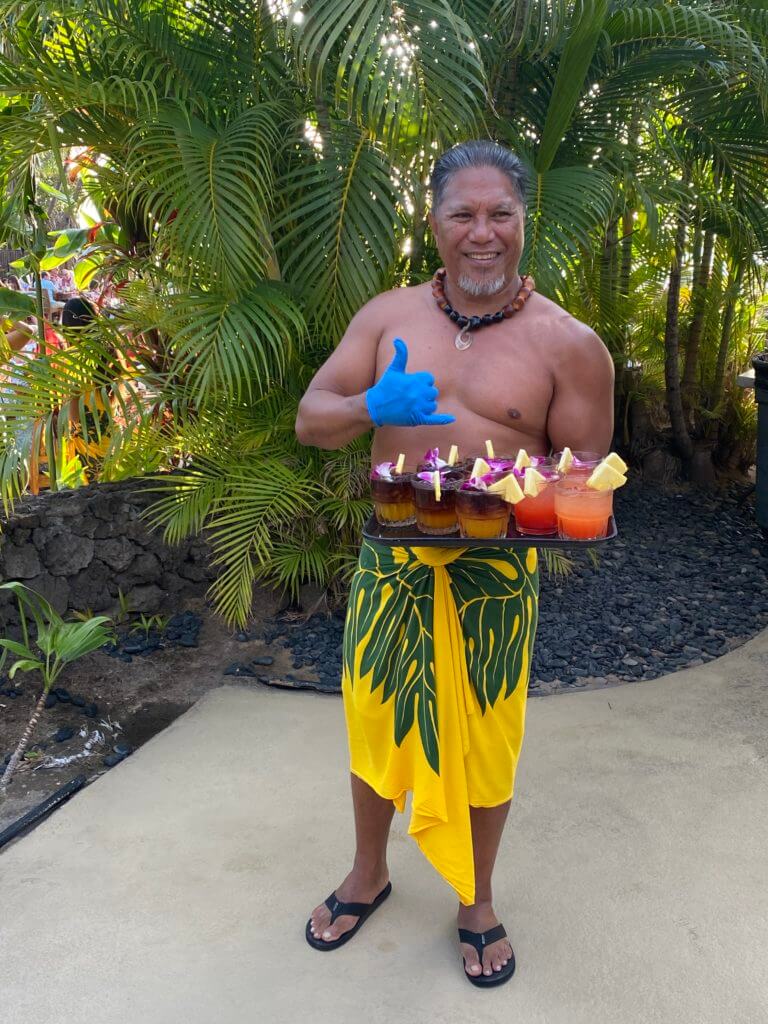
Dining & Food Experiences
Many popular restaurants and food experiences like luaus are booked out for months, so secure your reservation in advance of your trip. If your desired dates are booked, ask if they have a waiting list. Be prepared, many luaus require payment upfront and are quite costly at approximately $180.00 per person.
While in Hawaii, hit up your local convenience store and grab a popular local breakfast snack, like for example, spam musubi with egg (white rice with a slice of Spam and cooked egg wrapped in seaweed). These typically sell out by 9:00am as everyone grabs them on their way to work.
Also, we found amazing local baked goods and meat items like kalua pork, sesame chicken wings and incredibly fresh poke bowls in the deli section at the local grocery store. A variety of fresh fish is readily available in local markets and restaurants.
Enjoy your harvest while on the island by BBQing tenderloins or preparing street tacos from organs like, the heart and kidneys. This is a great way to celebrate the harvest and enjoy field to fork dining with your hunting group.
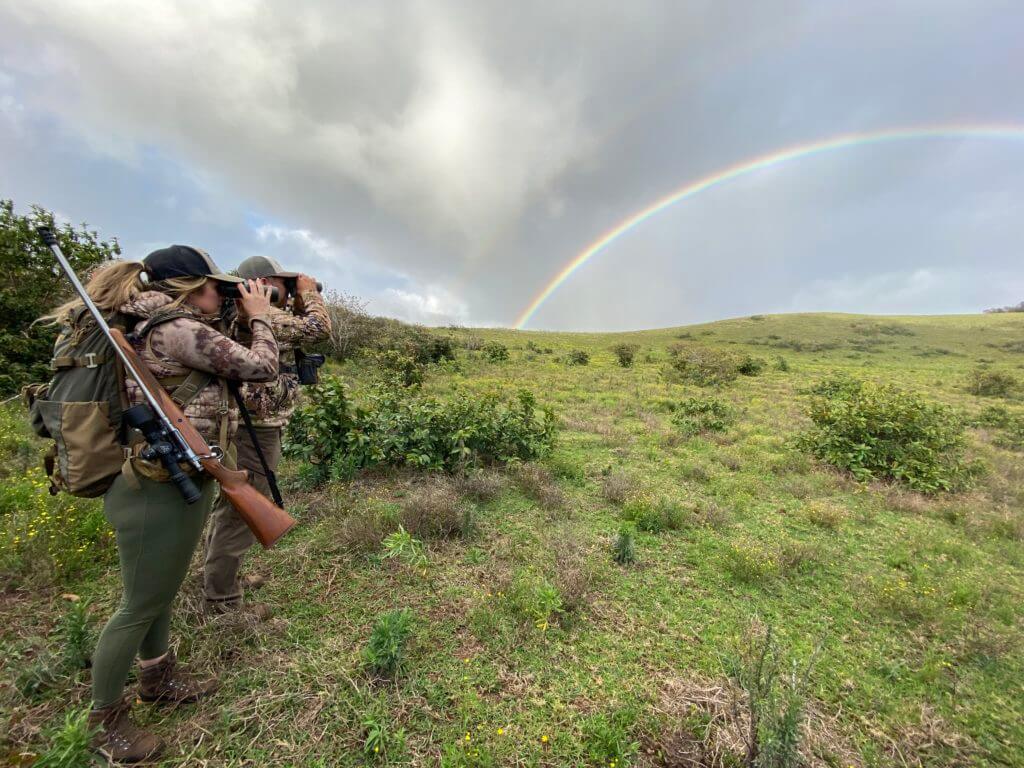
Hunting Gear
The nighttime lows are around 70 degrees, but some hunting locations are quite high in elevation, and you may want a warm jacket at first and last light. Because it is a tropical destination, you need to be prepared for rain with a light rain jacket and waterproof hunting boots. Lightweight, breathable pants and shirt are a must.
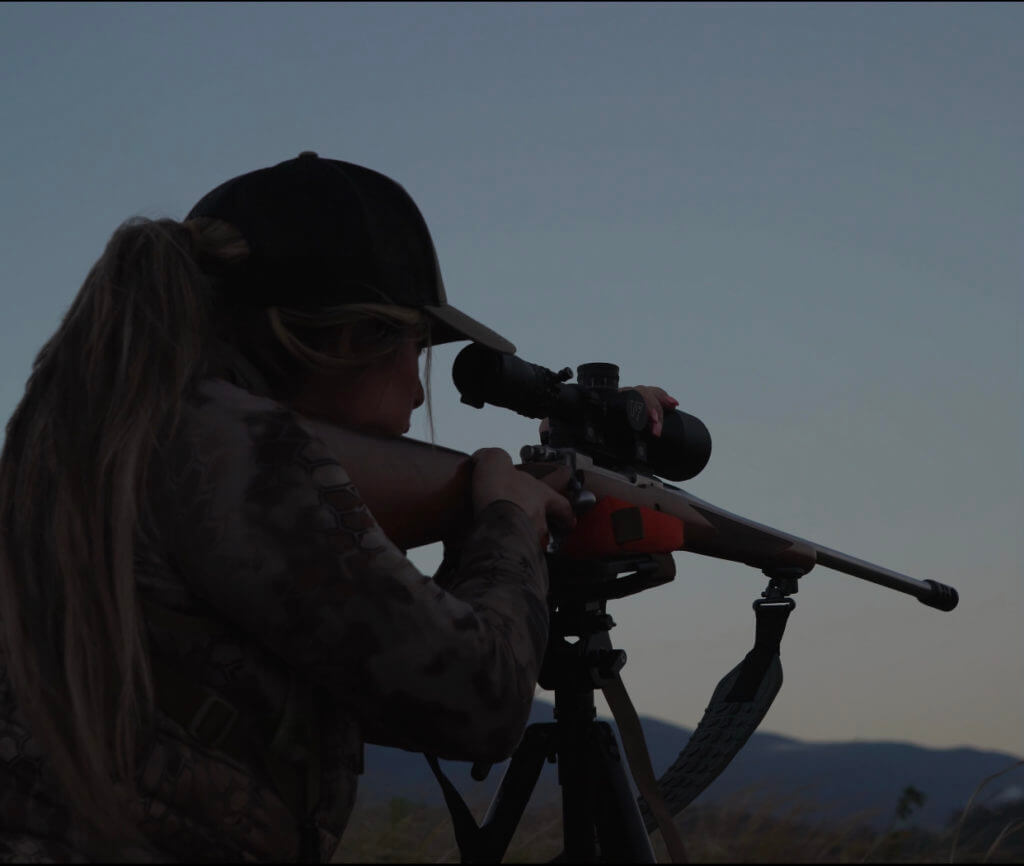
I recommend traveling with your firearm in a lock case (mandatory for flights) and inside of that locked case, stored in a soft gun case for ease of transport and security during the hunt. You will want to bring along binoculars as well as a small day pack to store your Hawaii Hunting License, water, your lunch and any other items that you may want afield. Put a bipod at the forend of your rifle and bring along shooting sticks or a tripod that you are comfortable shooting with up to 300 yards.
If you are going on a guided hunt, your guide will most likely have a spotting scope, however you will want to verify that and bring one if necessary.
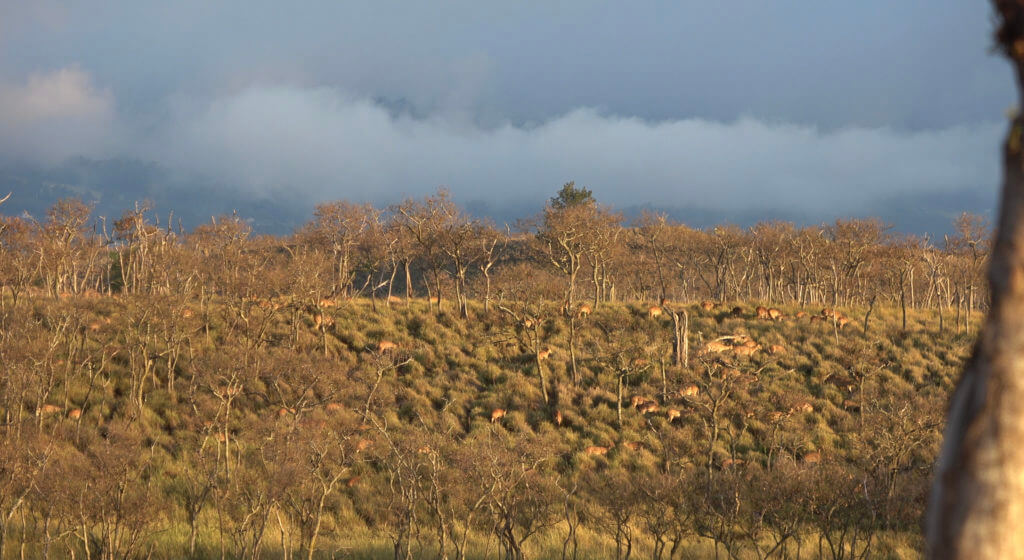
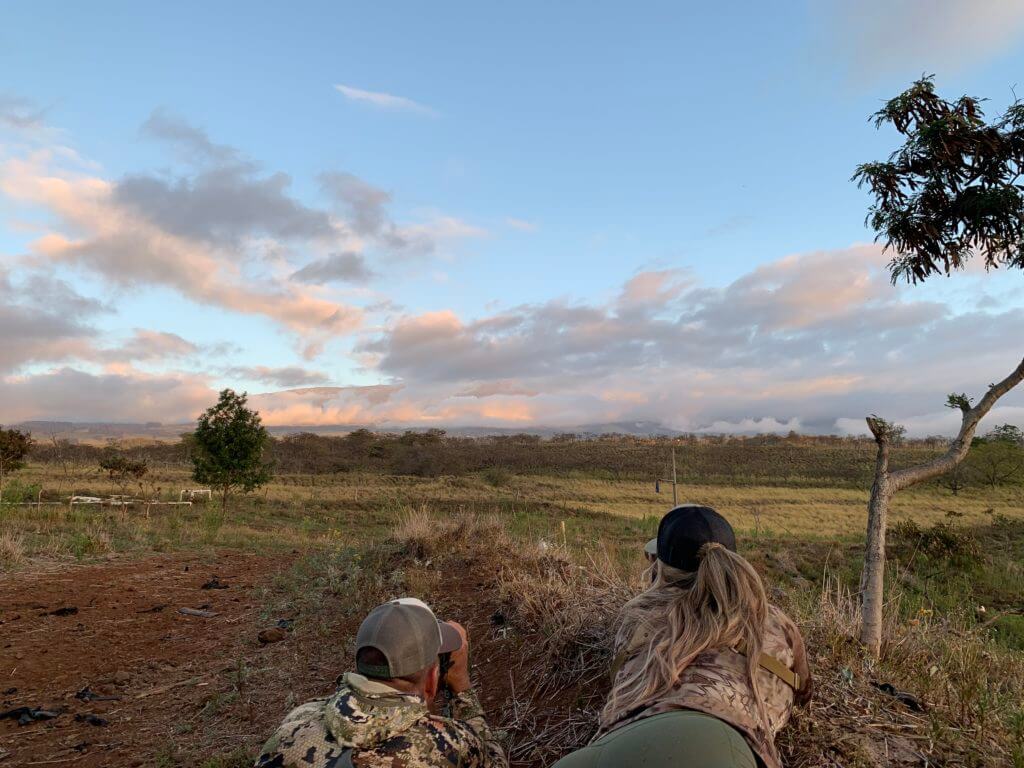
During the Hunt
The tropical climate and rich fertile soil make this agricultural mecca fantastic habitat for all wildlife to thrive. The animals concentrate on feeding areas which consist of old pineapple plantations, sweet potato farms and lush grassy fields. While hunting you may even encounter guava trees where you can pick and enjoy the delicate center pulp and seeds.
The terrain will vary from dry desert plantations to lush tropical rain forests, many of which are nothing short of spectacular with many locations boasting breathtaking ocean views.
Rifle hunts are typically spot, and stalk and are 100% fair chase. The Axis deer are extremely skittish, and you will want to use a glassing point to your advantage as many of the Axis deer are in large herds. Because the herds tend to be quite large, once you locate a trophy buck, you can anticipate average shots ranging from 100 – 350 yards which will vary depending on the terrain characteristics.
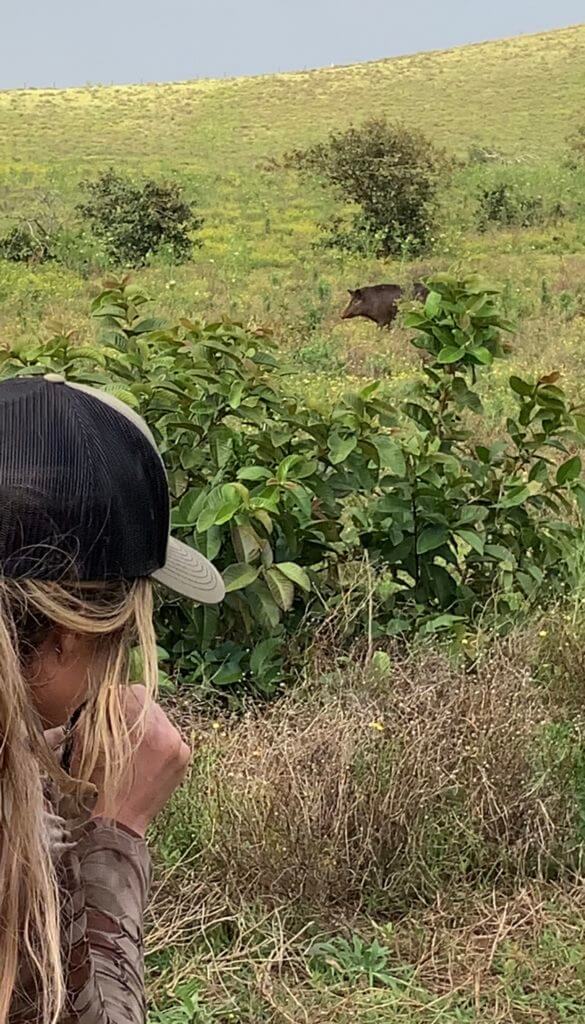
Some outfitters offer wild boar hunting with dogs while others offer spot and stalk hunts as well. Either way, harvesting a trophy wild boar is one of the more difficult hunts on the islands as the big boars tend to be rather nocturnal. Many outfitters will have clients hunt deer, turkey, or goat in the morning and save the evenings for wild boar hunting.
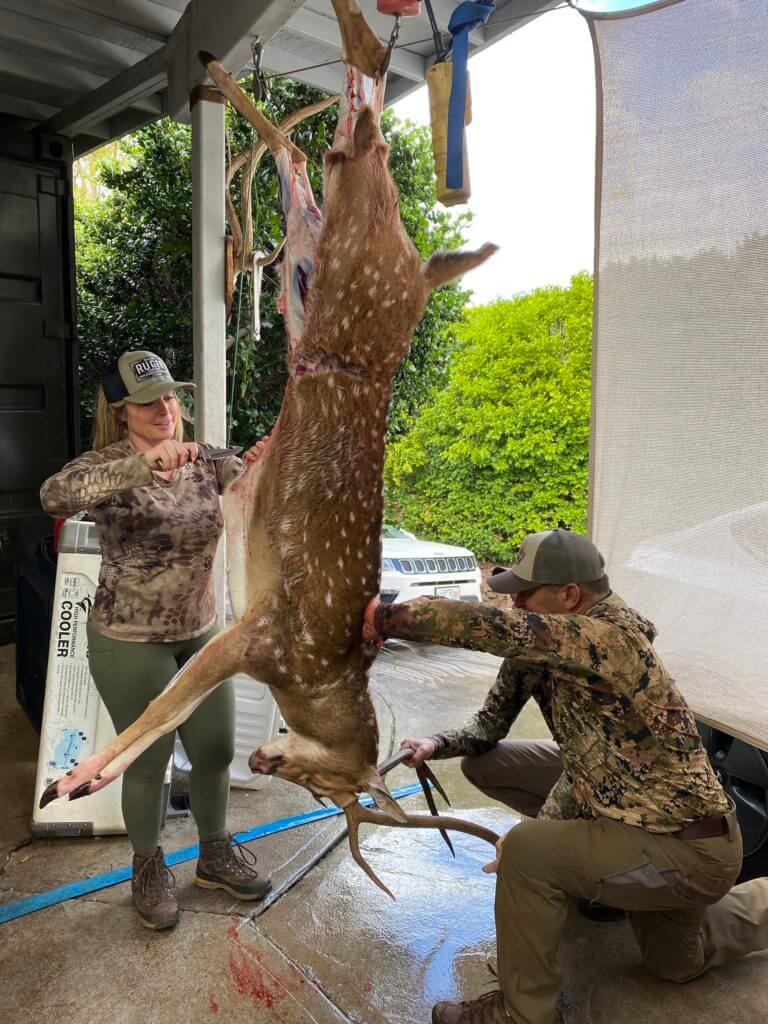
After the Hunt
The most economical way to transport your trophy and meat home with you is in the form of checked baggage. You will need to, de-bone, package and freeze the meat. You can either do this yourself or hire someone local to process the meat for you.
If you decide to shoulder mount your animal, the cape needs to be frozen for transportation. All brain matter must be removed from the skull cap or European mount for interstate travel. If you plan to process the animal yourself, be sure to pack along a foldable bone saw so that you can easily split the skull cap for transportation purposes. If necessary, split the skull cap in a V cut so that it can be easily put back together by your taxidermist for an accurate inside spread.
When you fly, the frozen meat can be transported as a checked bag in a medium cooler. Do not place dry ice in your cooler. Simply tape the cooler closed for security.
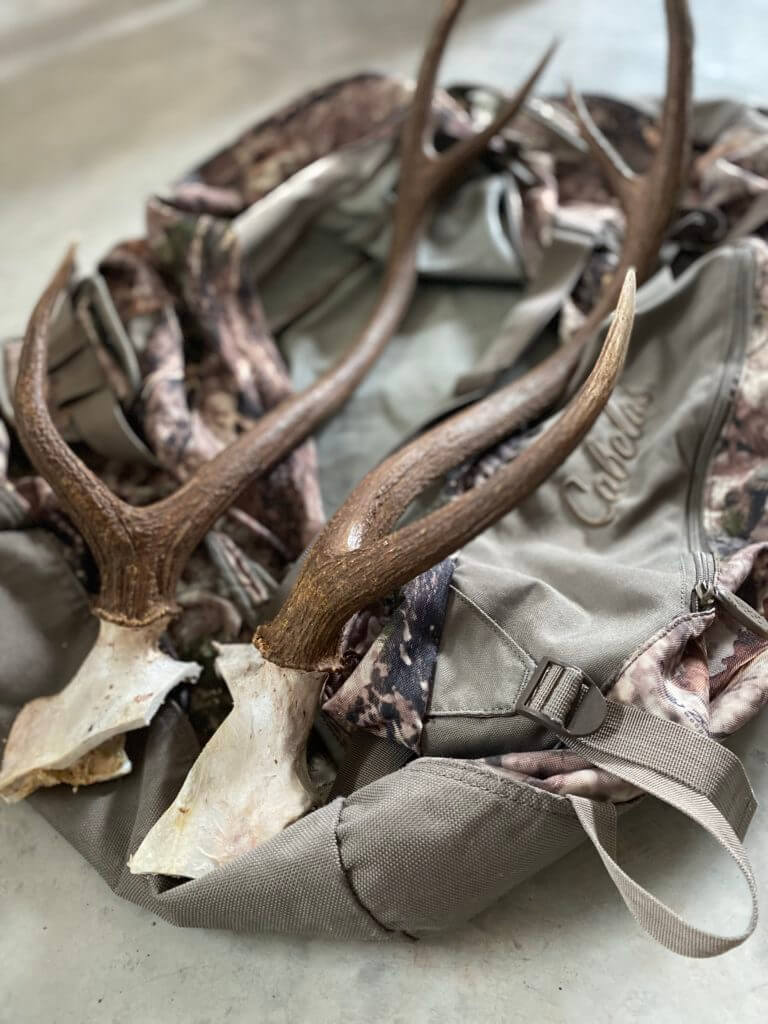
The antlers can be placed in a duffel bag with segments of garden hose on the tips as well as bubble wrap or clothing wrapped around the antlers and skull to prevent them from breaking. The frozen cape can be placed in a soft cooler inside the duffel bag, along with miscellaneous hunting clothing and gear.
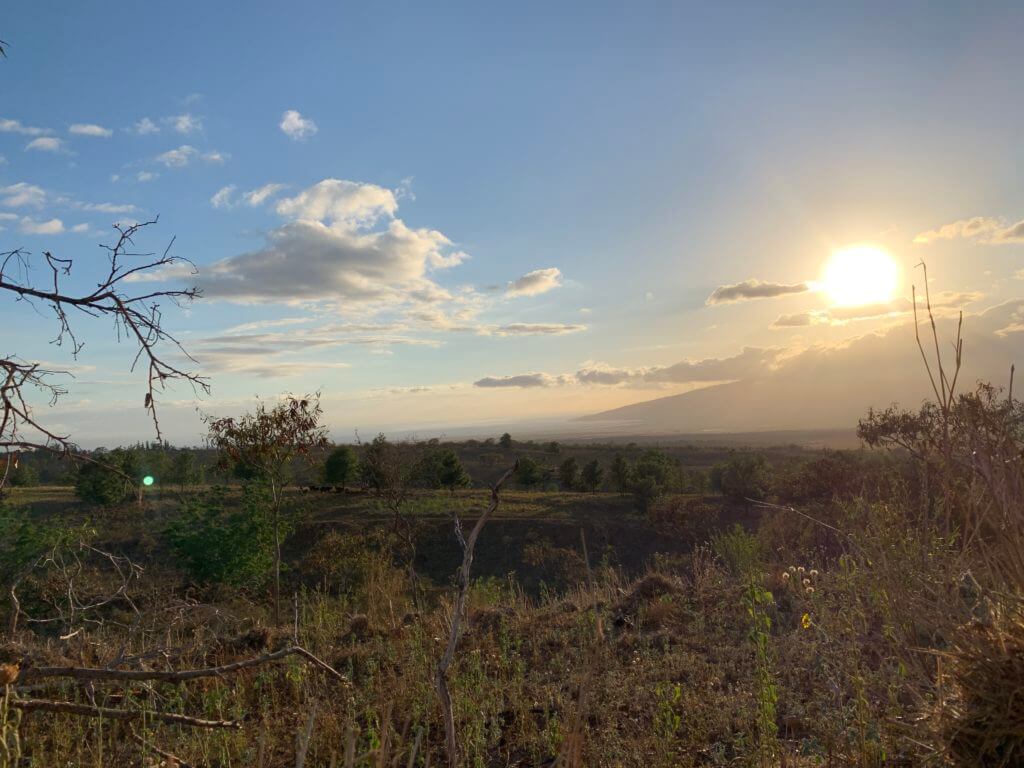
Conclusion
If escaping the cold to bask in the golden rays of sunshine and snorkel with sea turtles during the winter and early spring months sounds good to you, then adding a hunting trip in the lush emerald forests while overlooking the sparkling blue ocean might just be the hunt that you have been dreaming about.
Hunt-cationing is the perfect way to see and do it all and the Hawaiian Islands definitely offer a plethora of hunting opportunities as well as vacation activities.
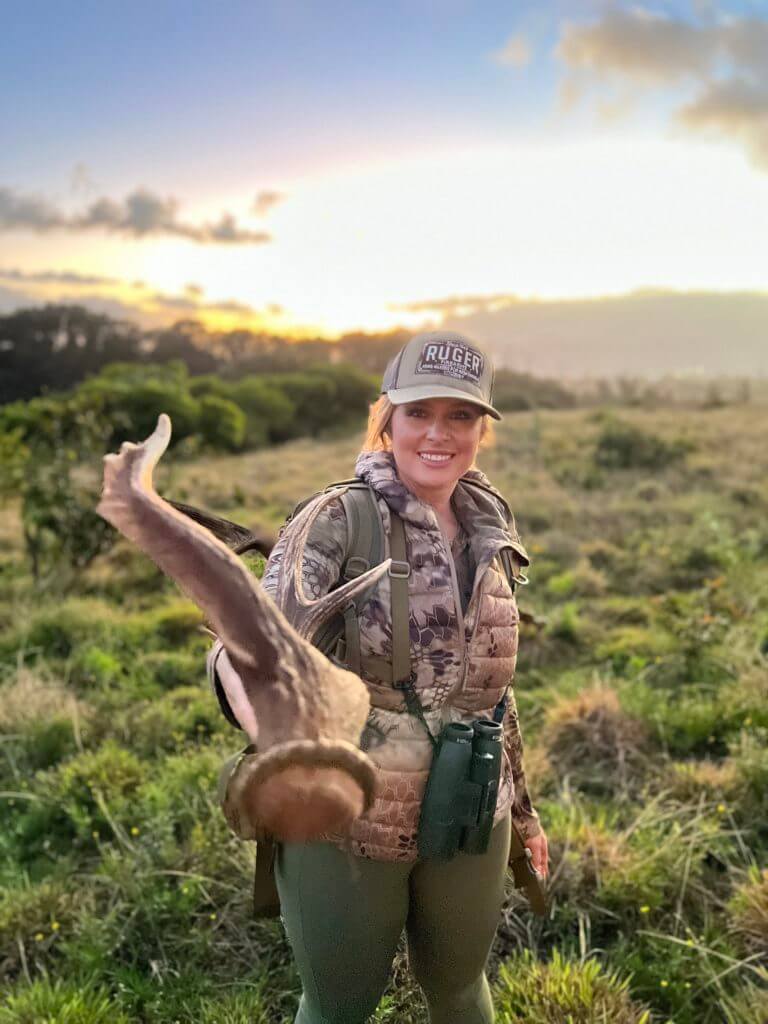


Also….if you want to hunt and help out the people and aina, go over to Moloka’i. The human population is abkut 8,000 but the axis deer number around 60,000. The deer are destroying land and crops. The western half of Moloka’i is a lot like SW Oklahoma: dry, tall grass, red dirt, dry and windy. The east end is more tropical and rain forest.
In short, Moloka’i could use some help with curtailing the axis deer population. And you can donate the meat if you want to share some aloha back. Bow or rifle, either one works.
You can hunt on Ni’ihau too. The entire island is private and has a large selection of animals. You ride a helicopter from Kaua’i to Ni’ihau and have a day there hunting with your local guides. And I guarentee you no one you know will have ever hunted there. It is a treat to say the least, you will not be disappointed.
For more info:
https://www.niihau.us/safaris.html
Wonderful article.. You forget to touch on the most important part of hunting in Hawaii. Is there public hunting grounds or do you have to hire an outfitter???
Great article! Good information. Thank you for sharing.
No information is given on cost or the names of any outfitters so the article is very limited in usefulness.